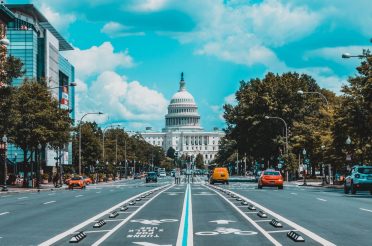 Paycheck Protection Program (PPP) loans can be a godsend to small businesses weathering coronavirus uncertainty, but if you're not careful they'll also surprise you with unexpected repayment in the end. Here’s our list of tripwires to be aware of plus a planning worksheet so you can avoid them. And to round it out, we’ll show you our recommended way to record PPP transactions in your books. (Last updated 30 Dec 2020 13:51 ET)
Paycheck Protection Program (PPP) loans can be a godsend to small businesses weathering coronavirus uncertainty, but if you're not careful they'll also surprise you with unexpected repayment in the end. Here’s our list of tripwires to be aware of plus a planning worksheet so you can avoid them. And to round it out, we’ll show you our recommended way to record PPP transactions in your books. (Last updated 30 Dec 2020 13:51 ET)
The Basics of PPP
As a necessary backdrop, here’s a quick recap of what the PPP is all about:
The CARES Act became public law on March 27 and included a number of relief provisions, among them the Paycheck Protection Program (Sec. 1102). Under the program, eligible small businesses can receive a loan in the amount of 2.5x their monthly average payroll costs, capped at $10 million. The money is allowed to be used for defined payroll costs, mortgage interest, rent, utilities, interest on previously existing debt obligations, and refinancing SBA economic injury disaster loans (EIDLs) issued between Jan 31 and Apr 3, 2020.
As modified by the PPP Flexibility Act signed into law June 5, at the end of 24-weeks from receiving the loan funds (with the option to elect 8 weeks if desired) a small business can apply to have all or a portion forgiven tax-free (including accrued interest) provided they: (a) spent at least 60% of the funds on forgiveable payroll costs (used to be 75%), (b) spent the remainder on forgiveable non-payroll costs, (c) didn’t reduce their employee headcount, and (d) didn’t reduce employee salary/wages more than 25%. To the degree any of these criteria aren’t met, the amount of loan forgiveness will be reduced (and to the degree monies were used toward non-permitted costs, they must be immediately repaid). PPP loans terms are a two-year payback period (newer loans carry five-year term, which can be negotiated for on earlier loans), 1% interest, and a payment deferral period through date of loan forgiveness (or 10 months if not applying for forgiveness).
Some additional relaxations introduced in the PPP Flexibility Act include:
- the date to meet the 'safe harbors' exceptions for restoring employee headcount and wage levels to pre-Coronavirus levels was moved to Dec 31, 2020,
- a new exception for those who aren't able to meet the employee headcount 'safe harbor' if they can establish the inability to rehire the same/similarly qualified employees or to return to same business activity level due to government-imposed restrictions,
- the ability to continue deferring employer Social Security taxes through Dec 31, 2020 even after PPP loan forgiveness.
Yet further clarifications and provisions were enacted under the Consolidated Appropriations Act signed into law Dec 27, 2020.
Details around the program can be found on the Department of Treasury’s dedicated webpage, the SBA's webpage and certain provisions have been addressed by the IRS as well.
Tripwires to Avoid for Full PPP Loan Forgiveness
Okay, so that’s the basics (and just so you know, there are many details), but here are major areas where things can go wrong:
- Tripwire 1: The ‘loan calculation’ window and ‘spending’ windows are mis-matched. — The loan is calculated based on 2.5x of your monthly average payroll (~10.83 weeks), but originally PPP funds had to be spent within an 8-week window to be forgiven, creating a mis-match with the potential leave businesses with a loan balance. This tripwire has been effectively been removed for many by the expansion of the spending window to 24-weeks under the PPPFA described in the Basics section above.
- Tripwire 2: Employer Social Security and Medicare are not allowable nor forgiveable ‘payroll costs’ — Employers kick in a match to their employee’s SS/Medicare withholding totaling 7.65%. Despite being a typical cost of payroll, and contrary to intuition, this “match” is not an allowable use of PPP funds and cannot be included in the amount you apply for forgiveness.
- Tripwire 3: Other payroll costs aren’t actually ‘payroll costs’ for PPP either — Additional costs you may be used to thinking of as payroll costs, but which aren’t for PPP, are: worker’s compensation insurance, an employee’s compensation above $100,000 annual (equates to $46,153 over an 24-week period), employee compensation under special COVID sick/family leave, Schedule C/Partnership self-employed health insurance/SEP contributions, and self-employed/owner-employee compensation greater than 2.5 month of 2019's, among others.
- Tripwire 4: Not enough spent on ‘payroll costs’ and/or ‘non-payroll costs’. — If you don’t spend at least 60% of your loan on forgiveable ‘payroll costs’, you’ll be left with a balance to repay. And if you safely spend at least 60% on forgiveable ‘payroll costs’, but don’t have enough forgiveable ‘non-payroll costs’ to make up the remainder, you’ll be left with a balance as well. (Note: Guidance was released that the new 60% is not a "cliff" as it appears to be in the law, but if less than 60% is spent towards payroll, the total forgiveable amount will be proportionally reduced.)
- Tripwire 5: You unintentionally increase your business’ overall costs — There’s a tricky mathematical problem that arises since the 7.65% employer SS/Medicare is not forgiveable under PPP: For example, you pay $100,000 in employee wages, you incur $107,650 in wages plus employer payroll taxes, but you can’t use PPP money for that additional $7,650. Which means that if you’re not getting at least that amount forgiven in ‘non-payroll costs’, you'll have a net negative cash flow as a result of the loan.
- Tripwire 6: Underpaid 2020 estimated tax payments — IRS Notice 2020-32 states that since PPP loan money forgiven is not taxable income, nor will the corresponding costs be deductible on your 2020 tax return. From a mathematical standpoint it works out in the wash, but the danger is that you fail to appropriately reduce expenses when projecting your 2020 taxes and therefore under-estimate your estimated tax payments (including the 1q and 2q that are both due on the new July 15 date). This tripwire is further exacerbated by the PPPFA which can result in not knowing whether/how much costs are forgiven until early 2021 or even after you'd normally file your taxes. (Note: This Tripwire was eliminated under the Consolidated Appropriations Act signed 27 Dec 2020.)
- Tripwire 7: Although payment is deferred, interest is accruing — Any PPP loan proceeds not forgiven at the end of your spending window will have been accruing interest during that time which will also need to be paid. The rate is 1%, but if you weren’t expecting it, it’s now an additional cost to you. This tripwire has the potential to further exacerbate under the PPPFA since the deferral period is extended and therefore more months of interest can accrue on loan balances that are potentially not forgiven.
- Tripwire 8: Using for non-approved costs — There’s a fairly limited list of costs you can pay for with PPP monies. So if you borrowed PPP funds, accepted the fact it was a loan and didn’t expect to apply for forgiveness (or not completely), and used the money for working capital or other costs outside the limited list, the SBA will require you to repay that amount and it can trigger the applicable of penalty charges for fraud. (Yikes!)
- Tripwire 9: There’s special interactions between PPP and EIDL funds — First, EIDLs issued between Jan 31 and Apr 3 could be refinanced into the PPP loan. However, to qualify for forgiveness all the PPP forgiveness rules need to be met. Second, the "up-to-$10k" EIDL grants issued will reduce the amount that qualifies for PPP loan forgiveness, so if you got one, be sure to factor this in. (Note: This forgiveness adjustment was eliminated by the Consolidated Appropriations Act signed 27 Dec 2020.) Third, PPP and EIDL can’t be used to cover the same costs for the same period — For example, you can’t use EIDL money to fund payroll for the period your PPP covers. (Keep in mind that EIDLs are general loans that have much wider uses that the limited list of PPP uses.)
- Tripwire 10: You issued bonuses in 1q 2020 — In general, employees can't experience more than a 25% pay decrease during the spending window. The reference period to calculate a "25% decrease" against is the previous full quarter (1q 2020 for most folks) – So you if issued bonuses at the top of the year (not uncommon), then you may have an unusually high 'reference period' for this requirement. (There are limited exceptions and safe harbors in the original law, and the PPPFA introduced additional safe harbors as described in the Basics section above – this is still a tripwire which you need to be sure you clear or satisfy one of the exceptions/safe harbors.)
A Tool to Aid 100% PPP Loan Forgiveness
The list above is not comprehensive, but it’s major ones many businesses will need to be alert to. But what happens if you trip one of these wires? Most of them will result in a less-than-full loan forgiveness, and there’s a number of formulas on how that pans out which we’re not going to cover here (ElementsCPA Members can reach out for calculations).
For some businesses, it’s not the end of the world if their full loan won’t be forgiven and it may still have been smart to apply for it. If you’re having second thoughts, however, the SBA allowed businesses to return the full amount by May 18 (twice extended) and preserve their eligibility for the alternative Employee Retention Tax Credit instead. (FAQ 47; See our video comparing the programs to clarify whether that makes sense for you.)
But let’s assume you want full loan forgiveness, and also no increase in your overall costs due to receiving a PPP loan. Given the above, you can see how important it is to keep tabs and plan your spending rather than just letting the chips fall where they may.
To make that easier, we’ve put together a spreadsheet that will help you: (a) plan PPP costs over your 24-week window (option to elect the old 8-week window under PPPFA), (b) track the actual spending as you go, and (c) provide the evidence required for the loan forgiveness application with your bank. While the (Note: The spreadsheet assumes you didn't reduce your employee headcount and didn't reduce employee salary/wages more than 25%, or that you are excepted from these requirements.)
PPP Clarifications and Definitions
The SBA finally released the forgiveness application the night of May 15 and some application guidance the night of May 22. In this section we'll catalog some of the important clarifications and definitions that have been released thus far:
- Paid/Incurred; Cash/Accrual? — One of the big questions was what transaction dates matter for eligible PPP costs. The SBA has said that for non-payroll costs: (a) those incurred before spending window, but paid during the window count, and (b) those incurred during spending window, but paid after on the next regular due date can count (e.g. utility bill). The same approach applies for payroll costs with one twist: Businesses with bi-weekly or more frequent payrolls can opt for an alternative spending window for payroll-only, using the first day of the their first pay period after PPP funds are deposited in their account. (Note: The SBA's intent as currently written is to allow roughly a week or two slide for payroll, not months.)
- What about bonuses? — In its May 22 guidance, the SBA clarified that employee bonuses/ hazard pay can qualify for forgiveness provided the $100k annualized compensation levels are not exceed (e.g., compensation does not exceed $46, 153 during the 24-week period). A critical related note: owner-employees (e.g., S-corps and C-corps) and self-employed persons (e.g., Schedule Cs and Partnerships) cannot be paid more than 2.5 months of their 2019 compensation level, which may have the effect of limiting or eliminating bonuses for these individuals.
- Exceptions to the 'headcount' requirement — Further clarification was provided around the exceptions to the requirement to keep the same number of employees. Exceptions exist if: (a) you're able to reach that headcount by Dec 31 (under the PPPFA), (b) an employee refuses to return (given you fulfill certain steps), (c) an employee is fired for cause, (d) an employee voluntarily resigns, or (e) an employee voluntarily requested and received reduction in hours. (Additional exceptions to the 'headcount' requirement were created under the PPPFA and listed in the Basics section above.)
- Exceptions to the 'compensation level' requirement — Further clarification was also provided around the exceptions to not allowing each employee's compensation to fall more than 25%. As long as the compensation level is restored by Dec 31 (under the PPPFA), no reduction in loan forgiveness is applied.
- Forgiveness application — A special shortened form of the forgiveness application was released the morning of June 17 with a shortened version for self-employed persons, including those with employees as long as none of their compensation was reduced more than 25% (Form 3508EZ). And the U.S. Treasury clarified at roughly midnight of June 22 that borrowers could apply for PPP forgiveness before the 24-week covered period was up if they wanted. An even further simplified form was issued October 8 (Form 3508S) which was originally made available to borrowers of $50,000 or less, but later expanded to $150,000 or less under the Consolidate Appropriations Act signed 27 Dec 2020.
- More to come — A FAQ is expected to be released but was not yet at the time this post was last updated.
How to Record PPP Transactions in your Business' Books
One more critical piece of the puzzle: How do you keep track of all this in your business’ books? If there’s one thing businesses have learned in this whole pandemic and PPP process, it’s how critical good finances are to business strategy and operations.
There’s certainly more than one way to do it, but we always like to apply our ‘less, but better’ design-orientation to keep things as simple as possible. So here’s our recommended method:
1. Record the initial PPP deposit as a loan. (Accounting-speak: Debit Cash / Credit PPP Loan)
2. Record your allowable costs (e.g., payroll, rent, utilities, etc.) as usual. (Accounting-speak: Debit Expense / Credit Cash)
3. Once it’s approved, record loan forgiveness in two entries:
3A. Reflect forgiveness of the approved amount to a non-taxable revenue account. (Accounting-speak: Debit PPP Loan / Credit Non-taxable revenue)
3B. Reflect the corresponding expenses to a non-deductible expense account. (Accounting-speak: Debit Non-deductible expenses / Credit Special negative expense)
Steps 3A and 3B will likely involve setting up new accounts in your books. And we've opted for a consolidated approach in 3B (rather than separately reducing payroll, rent, utilities, etc.) so that you can maintain your business’ expense comparability over time. (Our Tax Designers will be sure to adjust this properly when preparing your tax returns, however.)
Dodging a Moving Target
So that’s a lot of detail, and it’s not even all of it. Not to mention that the SBA hasn't yet released its FAQ and there's some new questions stemming from the PPPFA enacted June 5.
We’ll be keeping tabs on things and also updating this post and our Twitter feed as things unfold, but we strongly recommend you get ahead of the curve with the tools we provide here so you can experience the true relief the PPP was intended to give and not the nasty surprises and avoidable additional cash outlays many are sadly likely to otherwise fall into.







